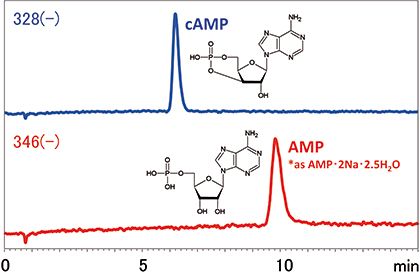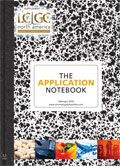Analysis of Adenosine Monophosphate (AMP) Using Shodex Anion Exchange VT-50
The Application Notebook
Studies of adenosine monophosphate (AMP) and phosphorylated sugar in rat blood have become increasingly important in toxicology and insulin investigation. HPLC is typically the ideal method for this study. Shodex VT-50 2D would be the ultimate column due to its cAMP and AMP capabilities.
Studies of adenosine monophosphate (AMP) and phosphorylated sugar in rat blood have become increasingly important in toxicology and insulin investigation. HPLC is typically the ideal method for this study. Shodex VT-50 2D would be the ultimate column due to its cAMP and AMP capabilities.

Figure 1: cAMP (top) and AMP (bottom) analyzed by anion exchange mode using VT-50 2D.
Experimental Conditions
The analysis of AMP and cAMP was performed on a Shodex VT-50 2D (2.0 mm ID × 150 mm) column. The column temperature was 60 °C and the flow rate was 0.3 mL/min. The eluent used was 25 mM HCOONH4 (aq). The injection volume of 5 µL of 25 ng/mL (in H2O:CH3CN, 1:1) was used for each experiment. The HPLC system was coupled with ESI-MS SIM (-) detector.
Conclusions
Shodex VT-50 2D was successfully applied to analyze AMP and cAMP. The baseline was shown to be stable with distinct peaks under 12 min. Since this method was effective for AMP and cAMP, it can be further applied to phosphorylated sugar analysis.

Shodex™/Showa Denko America, Inc.
420 Lexington Avenue Suite 2335A, New York, NY, 10170
tel. (212) 370-0033 x109
Website: www.shodex.net















